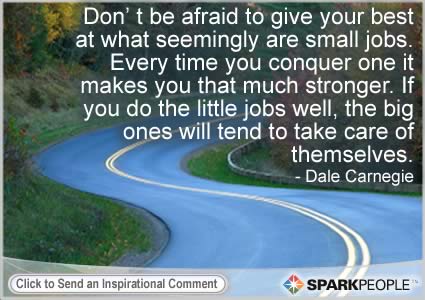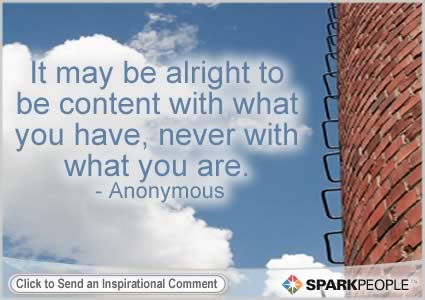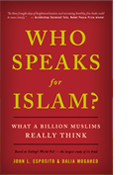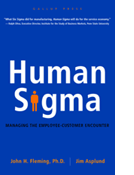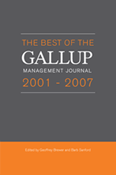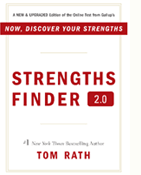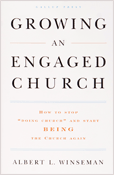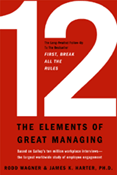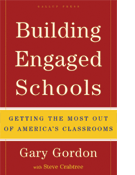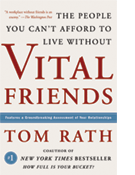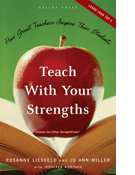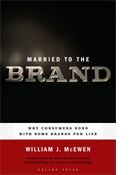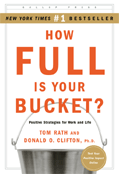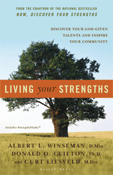2008 Releases
Who Speaks for Islam? What a Billion Muslims Really Think By John L. Esposito, Ph.D., and Dalia Mogahed
Based on the largest and most in-depth study of its kind, this book presents the remarkable findings of the Gallup Poll of the Muslim World, the first ever data-based analysis of the points of view of more than 90% of the global Muslim community, spanning nearly 40 countries.
John L. Esposito, one of the leading experts on the Muslim world, and Dalia Mogahed, Gallup's executive director of Muslim studies, offer readers an evidence-based understanding of extremism, the role of women in Muslim societies, Islam, and democracy, and what more than a billion Muslims really think about the West.
2007 Releases
Human Sigma: Managing the Employee-Customer Encounter By John H. Fleming, Ph.D., and Jim Asplund
(Hardcover, October 2007)
In the past, companies have not applied rigor and precision to measuring and managing the "softer," human side of business. That is about to change. Human Sigma reveals that there are right and wrong ways to assess and manage the health of a company's employee and customer relationships. This rigorous new approach -- HumanSigma -- offers a new perspective on organizational performance that hinges on five core principles all great companies must embrace.
The Best of the Gallup Management Journal 2001-2007 Edited by Geoffrey Brewer and Barb Sanford
(Hardcover, December 2007)
Featuring highlights from the first seven years of the Gallup Management Journal, the articles and interviews in this volume cover topics such as winning fickle customers for life, why customer satisfaction is the wrong measure, the best way to get meaningful employee feedback, the 12 elements of great managing, why most advertising doesn't work, and the impact of positive leadership.
The volume includes a range of voices from within and outside of Gallup: a Ritz-Carlton® executive tells how his company is reinventing its world-class brand, while a leader at Ann Taylor® describes how the retailer invests in talent; Nobel Prize winner Daniel Kahneman probes how customers think, while one of the inventors of the Internet, Vinton Cerf, speculates on the future of his creation. To learn more about the Gallup Management Journal, go to http://gmj.gallup.com/.
StrengthsFinder 2.0 By Tom Rath
(Hardcover, February 2007)
To help people uncover their talents, Gallup introduced the first version of its online assessment, StrengthsFinder, in the 2001 management book Now, Discover Your Strengths. The book spent more than five years on the bestseller lists and ignited a global conversation, while StrengthsFinder helped millions to discover their Top 5 talents.
In StrengthsFinder 2.0, Gallup unveils the new and improved version of its popular assessment, language of 34 themes, and much more. Loaded with hundreds of strategies for applying your strengths, this new book and accompanying website will change the way you look at yourself - and the world around you - forever.
Growing an Engaged Church By Albert L. Winseman
(Hardcover, May 2007)
For discounted bulk orders of 10 or more copies, or for more information, contact Cinda Hicks at cinda_hicks@gallup.com.
Church leaders are never going to inspire more people to be actively and passionately involved in their congregations by doing the same things over and over. Pastors and lay leaders need fresh, innovative approaches. The last thing they need is "just another program" or to set up a laundry list of new activities for members.
This compelling and insightful book explores how churches and parishes can dramatically increase members' participation, service to the community, giving, and even life satisfaction. But the solutions it offers are not the "magic pill" many leaders have come to expect. Rather, the book shows pastors how to reach and inspire the hearts, minds, and imaginations of the people they lead.
2006 Releases
12: The Elements of Great Managing By Rodd Wagner & James K. Harter
(Hardcover, December 2006)
12: The Elements of Great Managing is the long-awaited sequel to the 1999 runaway bestseller First, Break All the Rules. Grounded in Gallup's 10 million employee and manager interviews spanning 114 countries, 12 follows great managers as they harness employee engagement to turn around a failing call center, save a struggling hotel, improve patient care in a hospital, maintain production through power outages, and successfully face a host of other challenges in settings around the world.
Authors Rodd Wagner and James K. Harter weave the latest Gallup insights with recent discoveries in the fields of neuroscience, game theory, psychology, sociology, and economics. Written for managers and employees of companies large and small, 12 explains what every company needs to know about creating and sustaining employee engagement.
BUILDING ENGAGED SCHOOLS: Getting the Most Out of America's Classrooms By Gary Gordon, with Steve Crabtree
(Hardcover, October 2006)
Leaders of American schools are approaching a crossroads. They can continue to struggle with outdated assumptions and increasingly demoralizing workplaces, or they can step back and reexamine what students must take away from schools to fulfill their potential in life -- and what teachers need to help them get it. Building Engaged Schools makes the case that it's time for students, teachers, and schools to reorient the learning process around better understanding -- and use -- of the strengths of individuals.
VITAL FRIENDS: The People You Can't Afford To Live Without By Tom Rath
(Hardcover, August 2006)
For years, employers have discouraged close friendships at work, when in fact they should do the exact opposite. From the author of the #1 New York Times bestseller How Full Is Your Bucket? and based on a new "Vital Friends Assessment," Vital Friends helps readers identify the friendships that make their work and home life more positive and productive.
2005 Releases
TEACH WITH YOUR STRENGTHS: How Great Teachers Inspire Their Students By Rosanne Liesveld and Jo Ann Miller, with Jennifer Robison
(Hardcover, October 2005)
For discounted bulk orders of 10 or more copies, or for more information, contact Gary Evans at twys@gallup.com.
What do great teachers do differently? They make the most of their natural talents and don't strive to be well-rounded. In the award-winning Teach With Your Strengths, you'll hear from great teachers, many of whom reveal their unorthodox -- and sure-to-be-controversial -- approaches. You'll gain key insights gleaned from 40 years of research into great teaching. And, you'll take an online assessment that reveals your Signature Themes of talent.
MARRIED TO THE BRAND: Why Consumers Bond With Some Brands for Life By William J. McEwen
(Hardcover, November 2005)
Order Now
Married to the Brand tells the story of what makes profitable brand relationships work -- through the eyes of the consumer, not the marketer. Packed with stories and compelling discoveries from a worldwide consumer database, this book explores why people form deep emotional connections with some brands and not others.
2004 Release
HOW FULL IS YOUR BUCKET?: Positive Strategies for Work and Life By Tom Rath and Donald O. Clifton, Ph.D.
(Hardcover, fall 2004)
The #1 New York Times Bestseller: Order Now
Order the Educator's Edition
Organized around a simple metaphor of a dipper and a bucket, How Full Is Your Bucket? shows how even the smallest interactions we have with others every day profoundly affect our relationships, productivity, health, and longevity.
2003 Release
LIVING YOUR STRENGTHS: Discover Your God-Given Talents and Inspire Your Community By Albert L. Winseman, D. Min., Donald O. Clifton, Ph.D., and Curt Liesveld, M.Div.
(Hardcover, fall 2004)
For discounted bulk orders of 10 or more copies, or for more information, contact Cinda Hicks at cinda_hicks@gallup.com.
Even in a country as religious as the United States, many people feel disengaged from their faith communities. More than half report that they don't get the opportunity to do what they do best in their congregation. Living Your Strengths shows people how to identify and affirm their talents, use them for growth and service, and discover their true calling.
http://www.gallup.com/press/17473/Gallup-Press.aspx

